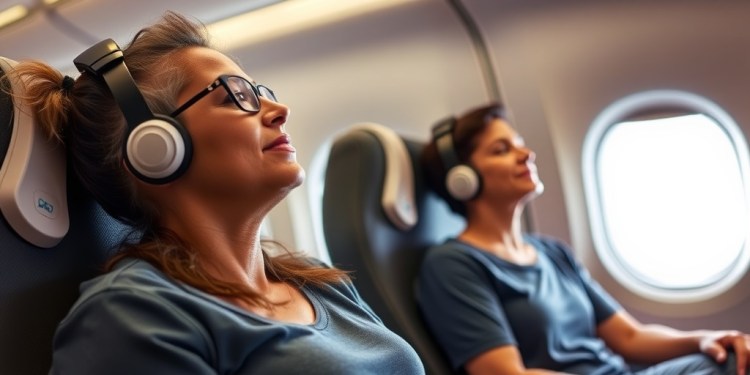The study, recently published in the journal Environmental Health and Preventive Medicine, focuses on a form of sound known as “sound spice®.” The research indicates that even just a minute of exposure to this particular sound can significantly reduce symptoms of motion sickness, such as dizziness and nausea, experienced by individuals while reading in a moving vehicle. This finding is not merely theoretical; it is based on rigorous scientific experimentation and observation, paving the way for practical applications in everyday life.
Motion sickness is a common disorder that affects a substantial portion of the population. It typically arises when there is a discrepancy between the sensory signals the body receives, particularly concerning balance and spatial orientation. The inner ear plays a crucial role in this process, and Kagawa and Kato’s research signifies an important step forward in addressing these sensory conflicts. By demonstrating that sound can be harnessed to stimulate the vestibular system, the researchers are uncovering the untapped therapeutic potential of auditory stimulation in treating movement-related ailments.
Intriguingly, the researchers discovered that the optimal frequency for this sound stimulation is around 100 Hz. This frequency has been shown to engage the otolithic organs in the inner ear, which are vital for detecting linear acceleration and gravitational forces. By stimulating these organs, the researchers suggest that their unique sound can enhance the body’s ability to maintain balance and spatial orientation, thereby reducing the severity of motion sickness symptoms.
Kagawa emphasized the safety of their sound stimulation technology, noting that the levels of sound exposure are well within the range of environmental noise that individuals regularly encounter in their daily lives. This aspect of their research is crucial because it reassures potential users of the device that it does not pose a health risk while delivering therapeutic benefits.
As they look to the future, Kagawa and Kato are optimistic about the potential applications of their unique sound technology. They envision practical implementations that could enhance the travel experience for passengers in cars, planes, and boats, ultimately improving quality of life for those who are prone to motion-related discomfort. This forward-thinking approach exemplifies how scientific inquiry can lead to innovative solutions for real-world problems, transforming an everyday challenge into an opportunity for technological advancement.
The implications of their work extend beyond simple symptom relief. By enhancing our understanding of how sound interacts with the vestibular system, this research opens new avenues in both medical and auditory sciences. Future studies could explore a broader range of sound frequencies and their effects on different populations, including children, the elderly, and individuals with pre-existing conditions that may affect their balance or susceptibility to motion sickness.
Furthermore, their findings contribute to the growing body of evidence that sound has profound effects on the human body in ways that were not previously understood. This research could help inform future treatment protocols for various vestibular disorders and solidify the role of sound therapy in holistic health and medicine.
In conclusion, the research conducted by Takumi Kagawa and Masashi Kato at Nagoya University represents a significant advancement in our understanding of motion sickness and potential treatment options. Their innovative use of sound technology to stimulate the inner ear offers not only a glimpse into a new therapeutic avenue but also invites a reconsideration of how we view sensory integration and balance in our daily lives. As this research gains traction, it may herald a new era in motion sickness management, ultimately benefiting countless individuals around the globe.
Subject of Research: Sound stimulation technology for motion sickness
Article Title: Discovery of Unique Sound Stimulation to Alleviate Motion Sickness
News Publication Date: [Insert Date]
Web References: [Insert Relevant Web References]
References: [Insert Relevant References]
Image Credits: [Insert Image Credits]
Keywords
Motion sickness, sound stimulation, inner ear, vestibular system, health technology, balance, auditory science, sound therapy, environmental health, preventive medicine, sympathetic nerve activation, therapeutic sound.
Tags: alleviate dizziness and nauseaenvironmental health and preventive medicinegroundbreaking health discoveriesinner ear balance and orientationinnovative motion sickness treatmentNagoya University research findingspractical applications of sound therapyrelief for motion sickness sufferersscientific study on sound therapysound spice technologysound therapy for motion sicknesstargeted sound waves inner ear





